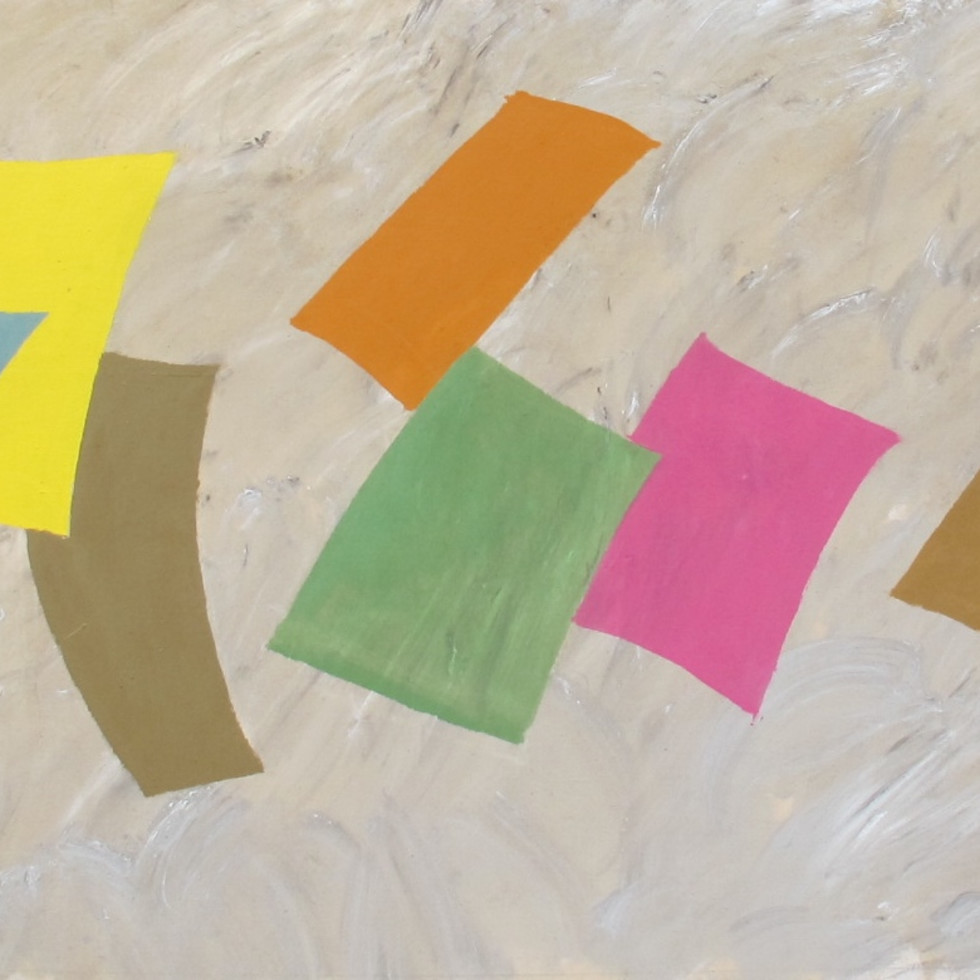Jack Bush
 "…I’m not painting flowers. I’m painting the essence, the feeling to me only, not how somebody else feels about those flowers, only me. Then I forget the flowers and make a good painting of it if I can."
Jack Bush, 1977
"…I’m not painting flowers. I’m painting the essence, the feeling to me only, not how somebody else feels about those flowers, only me. Then I forget the flowers and make a good painting of it if I can."
Jack Bush, 1977
Early on in his career, Jack Bush worked in his father's firm, the Rapid Electro Type Company, as a commercial artist while painting part time in Montreal. In 1927, he moved to Toronto and worked at the Rapid Grip company and throughout the 1930s, attended night classes at the Ontario College of Art with Frederick Challener, John Alfsen and Charles Comfort. He worked as a commercial artist until 1968. During this time, he was also influenced by the Group of Seven.
In the early 1950s, Bush started experimenting with abstraction in painting and in 1953, spurred by discontentment with the Canadian contemporary art scene, founded Painters Eleven alongside several younger Toronto artists. Among his artistic affiliations, he was also a member of the Ontario Society of Artists, the Royal Canadian Academy of Arts, the Canadian Group of Painters and the Art Directors Club of Toronto. In 1954, Bush had a fortunate encounter with American art critic Clement Greenberg, who, impressed by Bush's watercolours, encouraged the artist to explore different techniques and redirected his abstract expressionist style, and with time, became his mentor. Bush's friendship with Canadian painter William Ronald in New York also introduced him to the emerging New York art scene.
During the Painters Eleven period, Jack Bush painted from his perceptions, he sought to paint only from feeling and to transmit this emotion to the observer. Ken Carpenter explains, "Bush overcame his suffering in and through his art…He was an artist who was concerned with sentiment but who was never sentimental in his art." He used spontaneous brushstrokes according to his mood (in his abstract expressionist fashion) and hence became involved with two movements, namely Color Field Painting and Lyrical Abstraction.
During the 1960s, Bush made several works of gouache on paper using "abstracted motifs." Between 1958 and 1966, Bush used oil paint in diluted washes on canvas with rabbit skin glue which closely resembled acrylic paint, a common technique during this time period. Bush used a loose and casual application of paint which came to be known as "thrust and sash" painting, giving a sense of warmth to the works. Bush's eminence grew in the 1960s and in 1964, his work was exhibited in Greenberg's Post Painterly Abstraction exhibition and had shows in major museums in Canada and his collections can be found in the Boston Museum of Fine Arts and the Tate Gallery in London. In 1966, Bush transitioned to water borne acrylics due to the hazardous effects of solvent borne media.
In 1967, Jack Bush represented Canada at the Sao Paulo Biennial. Considered as one the greatest Canadian abstract painters to this day, Bush is characterized as a great master of expressive colour, like his predecessor, Matisse.
In 1976, the Art Gallery of Ontario presented a large retrospective of Jack Bush. He died one year later in January 1977.
Copyright Galerie Alan Klinkhoff, 2014.






